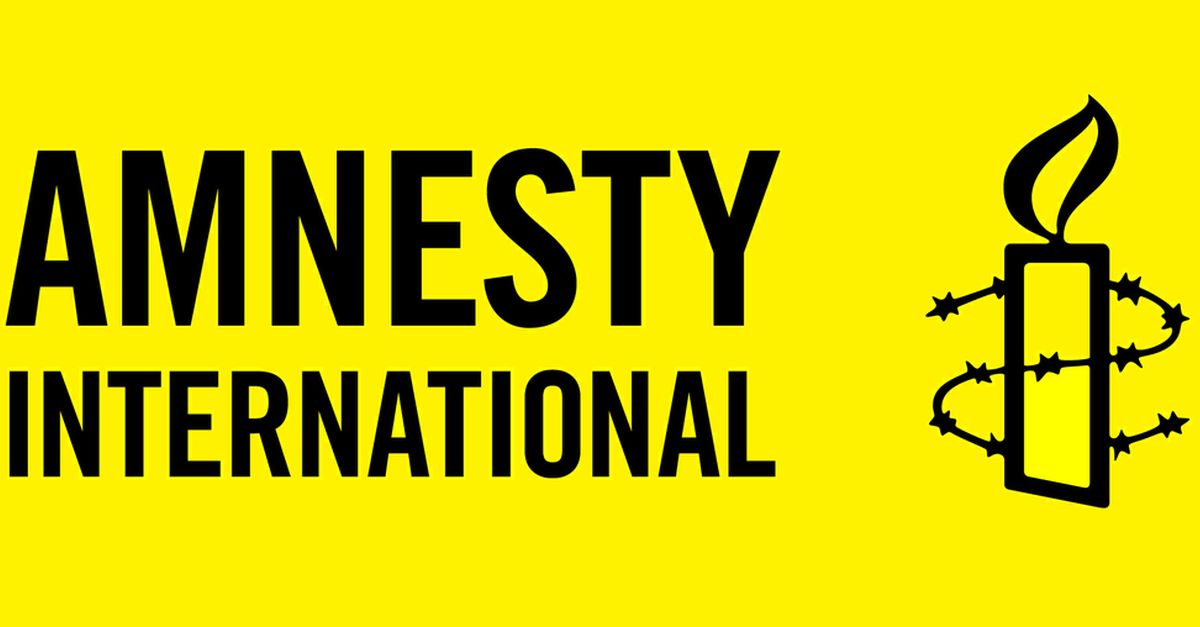
Ukraine: Mariupol theatre attack was 'a clear war crime' - new investigation
Published By Amnesty International UK [English], Wed, Jun 29, 2022 6:00 PM
Detailed investigation incorporates testimony from dozens of survivors and eyewitnesses, digital evidence and mathematical modelling of bomb blasts
It is likely that many fatalities remain unreported
‘She asked us to remember her name, because she felt she was dying’ - Dmytro Symonenko, who was with Luba Sviridova who died from her injuries
‘Russian forces have been on a well-documented and deliberate killing spree of civilians in Ukraine’ - Agnès Callamard
An extensive investigation by Amnesty International has concluded that Russian military forces committed a war crime when they struck the Mariupol theatre in Ukraine in March, killing at least a dozen people and likely many more.
In a new 72-page report - ‘Children’: The Attack on the Donetsk Regional Academic Drama Theatre in Mariupol - published today, Amnesty has documented how the Russian military likely deliberately targeted the theatre despite knowing hundreds of civilians were sheltering there on 16 March, making the attack a clear war crime.
Between 16 March and 21 June, Amnesty analysed a large amount of evidence - including interview testimonies from survivors and witnesses of the attack and its aftermath, 28 of whom were inside or adjacent to the theatre - concluding that the attack was almost certainly carried out by Russian fighter aircraft which dropped two 500kg bombs that struck close to each other and detonated simultaneously.
Amnesty also analysed satellite imagery and radar data immediately before and shortly after the attack, authenticated a large amount of photographic and video material provided by survivors and witnesses, while also studying two sets of architectural plans of the theatre.
Amnesty commissioned a physicist to build a mathematical model of the detonation, to determine the “net explosive weight” of the blast which would be required to cause the level of destruction seen at the theatre. This showed that the bombs had a net explosive weight of 400-800kg. Based on available evidence regarding the aerial bombs in Russia’s arsenal, Amnesty believes it likely that the weapons were two 500kg bombs of the same model, which would yield a total net explosive weight of 440-600kg.
The most likely Russian aircraft to have conducted the strikes are multi-role fighters - such as the Su-25, Su-30 or Su-34 - which were based at nearby Russian airfields and frequently seen operating over southern Ukraine. Amnesty examined several alternative theories and based on the available evidence found that a deliberate airstrike targeted at a civilian object was the most plausible explanation.
The theatre, in the city’s Tsentralnyi district, was a hub for the distribution of medicine, food and water, and a designated gathering point for people hoping for evacuation. The building was clearly recognisable as a civilian object, perhaps more so than any other location in the city. Local people had written the giant Cyrillic letters “Дети” (Russian for “children”) on forecourts on either side of the building, which would have been clearly visible to Russian pilots and also on satellite imagery.
Nevertheless, Russian bombs struck the theatre shortly after 10am on 16 March, producing a large explosion which caused the roof and huge portions of two main walls to collapse. At the time of the attack, hundreds of civilians were in and around the theatre. Amnesty believes that at least a dozen people were killed by the strike and likely many more, with many others seriously injured. This estimate is lower than previous reports, reflecting the fact that large numbers of people had left the theatre during the two days prior to the attack, and most of those remaining were in the theatre’s basement and other areas protected from the full brunt of the blast.
The bombs destroyed the adjacent interior walls along the sides of the performance space, and then breached the exterior load-bearing walls, creating two main debris fields on the building’s north-eastern and south-western sides. Both debris fields are visible on satellite imagery taken minutes after the strike.
Igor Moroz, a 50-year-old architect who was nearby when the theatre was hit, told Amnesty:
Vitaliy Kontarov, a 48-year-old lorry driver who was also close to the theatre at the time of the attack, told Amnesty: “We heard planes … I saw two missiles fire from one plane towards the theatre.”
Interviewees provided Amnesty with the full names of four people who were killed: Mykhailo Hrebenstskii, Luba Sviridova, Yelena Kuznetsova and Igor Chystiakov. They also gave the first names of three other people they believe were killed. Several survivors and other witnesses reported seeing dead bodies they could not identify, and it is likely that many fatalities remain unreported.
A teenager who was sheltering in the basement with her boyfriend and her mother when the bombs struck, told Amnesty:
Yehven Hrebenstskii, who found the body of his father Mykhailo inside the concert hall, told Amnesty:
Dmytro Symonenko, who was with Luba Sviridova moments before she died from her injuries, told Amnesty:
Many other interviewees told Amnesty they had seen bloodied bodies and dismembered body parts in the rubble of the devastated building. None of those who spoke to Amnesty provided any information to indicate that the Ukrainian military was using the theatre as a base for operations.
Press release distributed by Media Pigeon on behalf of Amnesty International UK, on Jun 29, 2022. For more information subscribe and follow